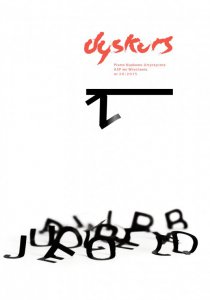Zmysły, ściana i dziura
SENSES, WALL AND HOLE
Author(s): Urszula M. BenkaSubject(s): Philosophy, Language and Literature Studies, Fine Arts / Performing Arts
Published by: Akademia Sztuk Pięknych im. Eugeniusza Gepperta we Wrocławiu
Keywords: perception; senses; intuition; picture; scene; literature
Summary/Abstract: Literature and art are bound together based on words used in the contextof different senses. Firstly: hearing. How literature is connected with music?Considering poetry, it is a simple problem: poems include rhythm, sothey are a form of music score. Prose, however, includes images, scenes,therefore the pieces of prose rather resemble scenography. Soundless imagesare music-like when they are connected with psychological entanglements,too difficult or too subtle to talk about them in simple terms. Musicreveals their innocent, almost self-evident ordinariness. Therefore, withoutgoing into the theory, in the section on hearing I’m talking rather aboutnon-hearing and incompatibility of music and poetic/prosaic ‘scores’. I referto the natural white spots (or ‘holes’) connected with hearing and feelingas they were discussed by Norwid, de Sade and Kafka. It is impossibleto express them through an established medium – words, sound or video.Second: sight. A piece of literature, when ‘translated’ to images, becomesintegral illustration of the text (as in Winnie the Pooh, The Little Prince andAlice in Wonderland). Writers and illustrators reveal their deeper, not necessarilyconscious, psychic reality. Alice reveals includes the deformationof character as the result of the real (internalized) pressures of culturalcontrol. This ‘oppressed’ sphere in Alice and then in its film adaptation byDisney was connected with sexuality, therefore the analysis concerns deformation(the artist is influenced by external pressure) and mitigation (heaccepts or conceals the existence of pressure).Thirdly – touch. Touch is erotic. Touching walls built into the nature by cultureis erotic, although the fact may horrify and sicken us.Fourth – intuition (sixth sense or sensus sacralis). This is the digression towardsthe art of describing metaphysics, which originally was mathematics. Fifth: balance. Art-pieces ‘speak’ while revealing their ‘fullness’ or alsothrough the symbolic connotations of their appearance, and the circumstancesin which perception occurs. As example, I chose poetic book byAndrzej Bednarczyk entitled Temple of the Stone.Sixth and final: the taste. Taste is the ultimate factor in the process ofperception of art. Can we literally understand that statement? Is taste reallya part of the perception of literature? Referring to the Bible, the Bookof Ezekiel, I try to find confirmation for my presumption that from themoment of putting it in writing (and thus alienating literature from itsorganic aspect), we are dealing with something fragmentary, incomplete,mutilated.
Journal: DYSKURS Pismo Naukowo-Artystyczne ASP we Wrocławiu
- Issue Year: 2016
- Issue No: 1 (20)
- Page Range: 24-49
- Page Count: 26
- Language: Polish

